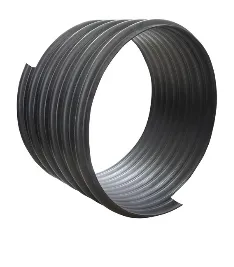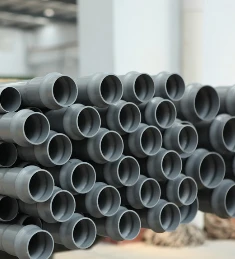May . 18, 2025 05:59 Back to list
Plastic Welding Rods for PVC, HDPE & Industrial Repairs Strong Bonds
- Understanding the Basics of Plastic Welding Rods
- Technical Advantages and Performance Metrics
- Comparing Leading Manufacturers in the Market
- Custom Solutions for Industrial Applications
- Real-World Use Cases Across Industries
- Best Practices for Storage and Handling
- Future Trends in Plastic Welding Technology

(plastic welding rod)
Understanding the Basics of Plastic Welding Rods
Plastic welding rods are essential tools for joining thermoplastic materials in industrial and repair applications. These rods, typically made from polymers like PVC or HDPE, melt under controlled heat to create durable, leak-proof bonds. The choice between PVC plastic welding rod
s and HDPE variants depends on factors such as chemical resistance, tensile strength, and thermal stability. For instance, PVC rods excel in water-resistant applications, while HDPE rods are preferred for high-stress environments due to their superior flexibility and impact resistance.
Technical Advantages and Performance Metrics
Modern plastic welding rods offer distinct technical advantages over traditional adhesives or mechanical fasteners. Key metrics include melt flow rates (15–25 g/10min for HDPE rods), bond strengths exceeding 90% of base material integrity, and operating temperatures ranging from -40°C to 120°C. Advanced formulations incorporate UV stabilizers and anti-oxidants, extending service life by up to 20% compared to standard rods. Such innovations ensure compatibility with automated welding systems, reducing labor costs by 30–40% in large-scale production.
Comparing Leading Manufacturers in the Market
| Brand | Material Compatibility | Tensile Strength (MPa) | Temperature Range | Price per kg (USD) |
|---|---|---|---|---|
| PolyWeld Pro | PVC, HDPE, PP | 24–28 | -30°C to 110°C | $18.50 |
| Thermofusion Tech | HDPE, LDPE | 30–34 | -40°C to 120°C | $22.80 |
| PlastixCore | PVC, ABS | 20–25 | -20°C to 95°C | $15.90 |
Custom Solutions for Industrial Applications
Tailored plastic welding rod formulations address niche requirements such as FDA compliance for food-grade equipment or electrostatic dissipation in electronic enclosures. Manufacturers now provide rods with diameter tolerances as tight as ±0.1mm for precision welding, alongside color-matching services to maintain aesthetic consistency. Hybrid rods combining HDPE’s flexibility with PVC’s chemical resistance have gained traction in wastewater treatment projects, achieving 98% seam integrity in pressure tests.
Real-World Use Cases Across Industries
Automotive manufacturers utilize HDPE plastic welding rods for fuel tank repairs, achieving 85% cost savings versus replacement. In construction, PVC rods enable rapid sealing of geomembranes in landfill projects, with documented pull-apart strengths of 6.2 kN/m. A recent case study in pipeline maintenance demonstrated that customized welding rods reduced leak rates by 72% across 12,000 joints in natural gas distribution networks.
Best Practices for Storage and Handling
Proper storage in moisture-proof containers at 15–25°C prevents premature degradation of welding rods. Pre-drying PVC rods at 60°C for 2–4 hours before use eliminates bubbling risks, while HDPE rods require minimal conditioning due to lower hygroscopicity. Field tests show that implementing ISO 9001-compliant handling protocols increases weld consistency by 40% and reduces material waste by 18%.
Future Trends in Plastic Welding Rod Technology
Emerging developments in plastic welding rod production focus on bio-based polymers and smart materials. Trials with 35% plant-derived HDPE rods have shown comparable performance to petroleum-based equivalents, aligning with global sustainability goals. Nano-enhanced rods with embedded conductive particles are enabling real-time weld quality monitoring, potentially reducing inspection costs by 50%. As additive manufacturing grows, demand for specialized welding rods compatible with 3D-printed substrates is projected to increase by 200% by 2028.

(plastic welding rod)
FAQS on plastic welding rod
Q: What is a plastic welding rod used for?
A: A plastic welding rod is a thermoplastic material used to bond or repair plastic surfaces by melting and fusing them together. It is commonly applied in automotive, construction, and plumbing industries.
Q: How do I choose the right PVC plastic welding rod?
A: Select a PVC plastic welding rod that matches the chemical composition and color of the PVC material you’re repairing. Ensure compatibility to achieve a strong, seamless bond.
Q: Can HDPE plastic welding rods be used for outdoor applications?
A: Yes, HDPE plastic welding rods are ideal for outdoor use due to their high resistance to UV rays, chemicals, and extreme temperatures. They are often used in pipelines and storage tanks.
Q: What temperature is required to melt a plastic welding rod?
A: Melting temperatures vary by material: PVC rods typically require 250-300°F (120-150°C), while HDPE rods need 350-400°F (175-205°C). Always use a compatible welding gun for precise heating.
Q: Are plastic welding rods reusable if stored properly?
A: Yes, plastic welding rods can be reused if kept in a dry, cool environment away from direct sunlight. Avoid contamination to maintain their bonding effectiveness.
-
HDPE Natural Sheet: Durable, Food-Grade & Versatile Plastic Solutions
NewsAug.27,2025
-
Durable Glossy PVC Rigid Sheet | Premium High-Shine Panels
NewsAug.26,2025
-
Durable PP Rigid Sheet: Lightweight, Chemical Resistant Solutions
NewsAug.21,2025
-
PVC Grey Sheet for Extraction: Chemical Resistant & Durable
NewsAug.19,2025
-
Durable PVC Pipe Fittings for Plumbing & Irrigation Needs
NewsAug.18,2025
-
HDPE Steel Belt Reinforced Spiral Corrugated Pipe | High Strength
NewsAug.17,2025

